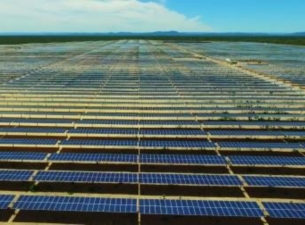Lapa, which is located in Bom Jesus da Lapa, in the north-eastern state of Bahia, is composed of two plants – Bom Jesus da Lapa (80 MW) and Lapa (78 MW), for a total installed capacity of 158 MW.
“The entry into service of Lapa is an important milestone for Enel in Brazil since it is the first solar PV project to become operational this year out of the four PV projects currently under construction by the Group in the country,” stated Carlo Zorzoli, Enel’s Country Manager in Brazil. “We were able to complete and commission Lapa more than two months ahead of the deadline set by the rules of the 2015 public tender which awarded us the project, therefore confirming our commitment to contribute to Brazil´s growth in the renewable sector and our leadership in the country’s photovoltaic market. Furthermore, this project will deliver much needed power to the energy thirsty northeast of Brazil that is currently facing a serious drought.”
Enel invested approximately 175 million US dollars in the construction of the solar park, which is supported by 20-year supply contracts that provide for the sale of specified volumes of energy generated by the plants to the Brazilian Chamber of Commercialisation of Electric Energy (Câmara de Comercialização da Energia Elétrica or CCEE).
The Lapa project introduces a cost-efficient design with new tracker solutions and new conversion units that streamline the PV plant’s construction and commissioning, whereby optimizing its production. In addition, a new commissioning strategy, based on a stronger synergy with contractors on site and a remote commissioning support, was implemented, allowing a 70% reduction in the average time to put plant into operation.
Lapa is located in an area with high levels of solar radiation and its entry into service will make a significant contribution towards addressing Brazil’s need for new power generation. The park is able to generate around 340 GWh per year, enough to meet the annual energy consumption needs of more than 166,000 Brazilian households while avoiding the emission of about 198,000 tonnes of CO2 into the atmosphere.
31 Декабря 2025 | среда | 06:10


